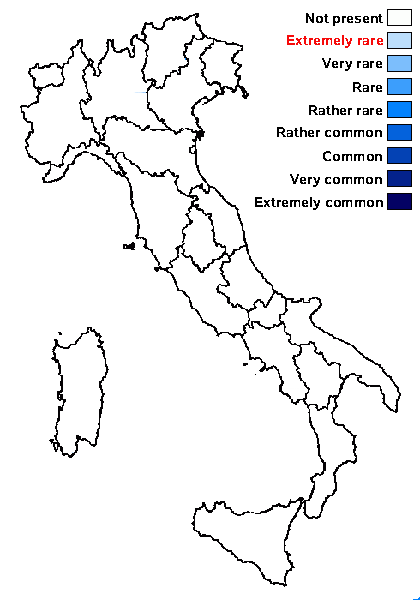Polyblastia likana Servít
Stud. Bot. Čechoslov., 7: 106, 1946
Synonyms:
Distribution:
Description: Thallus crustose, episubstratic, continuous or rimose, whitish to very pale brown. Perithecia black, globose, 0.4-0.6 mm across, at first immersed in the thallus, then 1/2-3/4 emergent. Involucrellum limited to the apical part of the perithecium, slightly diverging from exciple in lower part; exciple dark throughout; hamathecium of periphyses and periphysoids, interascal filaments absent; hymenial gel hemiamyloid, I+ red (I+ blue at very low concentrations of I), K/I+ blue. Asci 8-spored, clavate, K/I–, fissitunicate, the wall thickened above, with an ocular chamber, dehiscent by extrusion of an endotunica to form a delicate rostrum. Ascospores with 3 transverse septa and rarely a single, incomplete longitudinal septum, hyaline, ovoid to subclavate, the largest ones up to 57 x 17 μm. Photobiont chlorococcoid. Spot tests: K-, C-, KC-, P-, UV-. Chemistry: without lichen substances.Note: a species related to P. ardesiaca, found on limestone in rather dry situations; known from Central Europe and the mountains of the Mediterranean region, mainly in the montane belt; apparently rare in the Alps, being only known from Austria; to be looked for in Italy.
Growth form: Crustose
Substrata: rocks
Photobiont: green algae other than Trentepohlia
Reproductive strategy: mainly sexual

Predictive model
Growth form: Crustose
Substrata: rocks
Photobiont: green algae other than Trentepohlia
Reproductive strategy: mainly sexual

Predictive model

